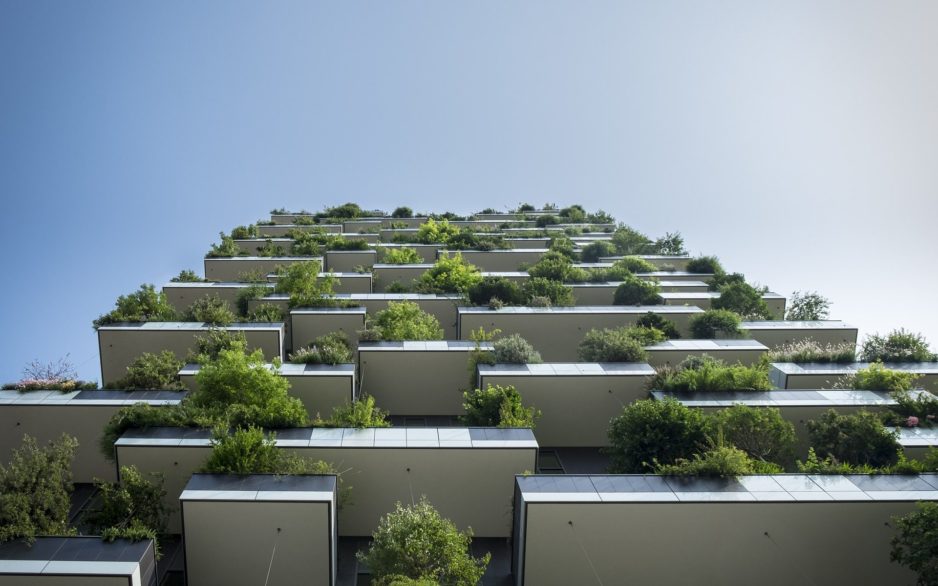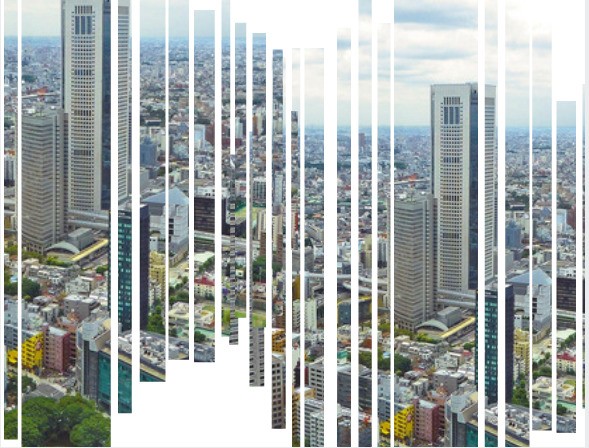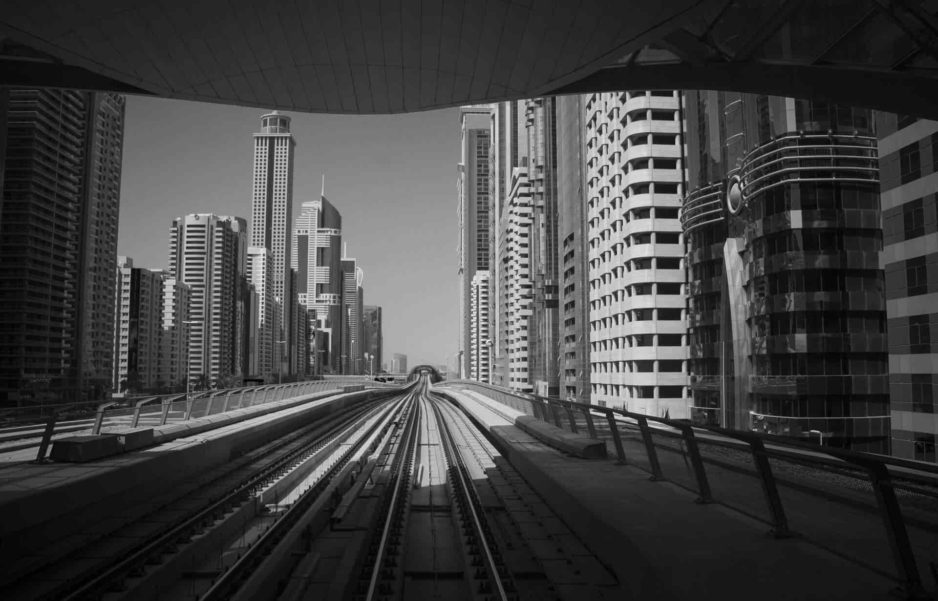Tag: Smart City
Architecture and Air Pollution
Architecture can have a positive or negative impact on a building’s energy efficiency. But can it effectively improve air quality?
China started recently the construction of Liuzhou Forest City, which is expected to be a satellite neighborhood completed by 2020 connected to the main city by rail. It is a wild reminder of the importance of architecture in controlling air quality in our living environments. This city is specifically designed to fight air pollution by extensive use of vegetation throughout the building façade. The design by Stefano Boeri Architetti follows the experience of their two buildings inaugurated in Milan 2014: Bosco Verticale. In China, 1 million plants and 40,000 trees planted all over the project will absorb 1,000 tons of carbon dioxide and 57 tons of other pollutants per year.
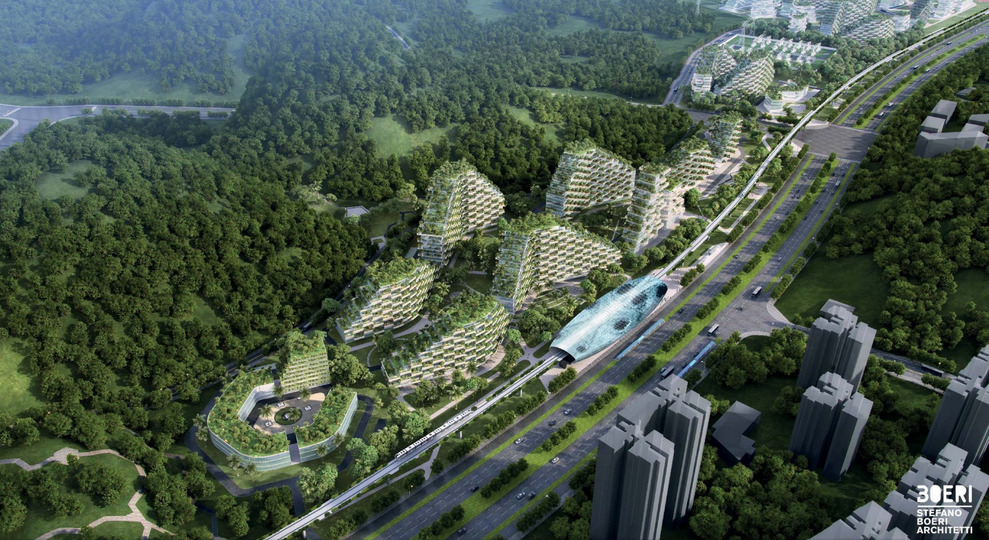
According to the architecture firm: “The diffusion of plants, not only in the parks and gardens or along the streets, but also over building facades, will allow the energy self-sufficient city to contribute to improve the air quality (absorbing both CO2 and fine dust of 57 tons per year), to decrease the average air temperature, to create noise barriers and to improve the biodiversity of living species, generating the habitat for birds, insects and small animals that inhabit the Liuzhou territory,”
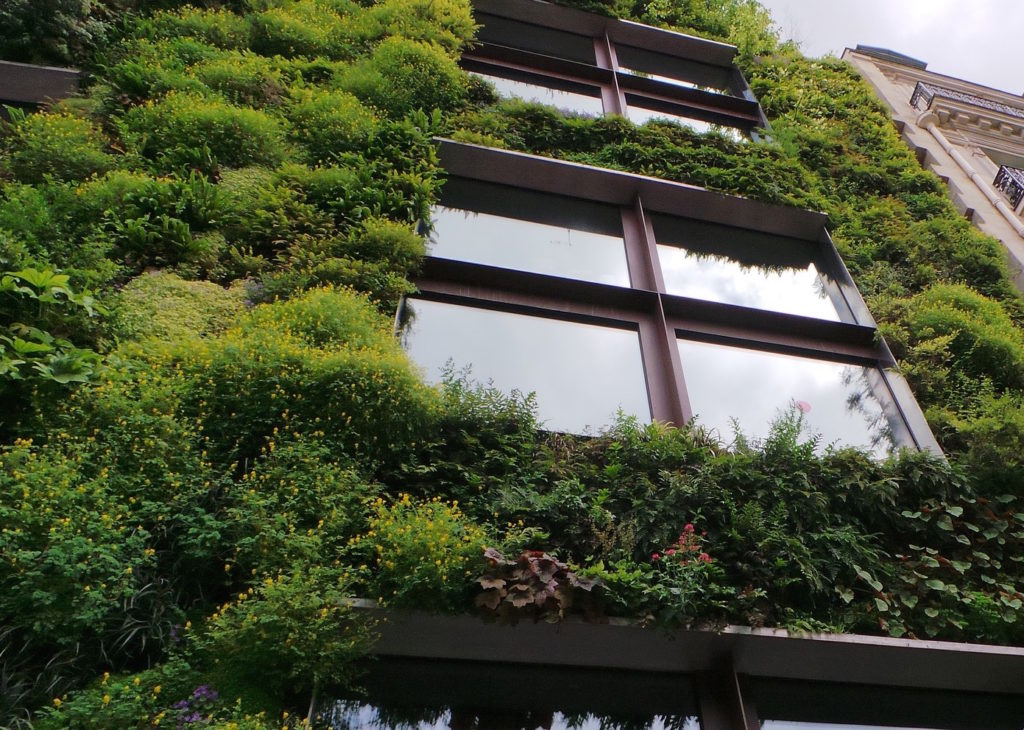
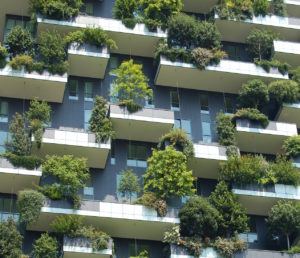
The idea to control air quality through architecture is not new. For decades, urban planners have worked and invested in bicycle paths, innovative transportation programmes, and looked into how to improve the cities’ walkability. All features with the objective of reducing emissions from cars and transportation. However, the role of the physical buildings themselves in improving air quality is picking up with many novel ideas in the past decades.
A few interesting and encouraging examples out there include 1. Mexico City, the Manuel Gea Gonzalez Hospital has an external structure that is coated with titanium dioxide. This coating -Provolste360e- helps break down pollutants when exposed to light by releasing free-radicals. Tiles coated with this substance can be used on any surface in the city and repurpose old façades. 2. Paris where the Musee Quay Branly with its living wall that absorbs carbon dioxide and emits oxygen. Yet another example is the Congress Gateway Towers in Chicago, which have an air filtration system to absorb CO2, which then feeds growing algae and is processed into biofuels to provide clean energy for the building.
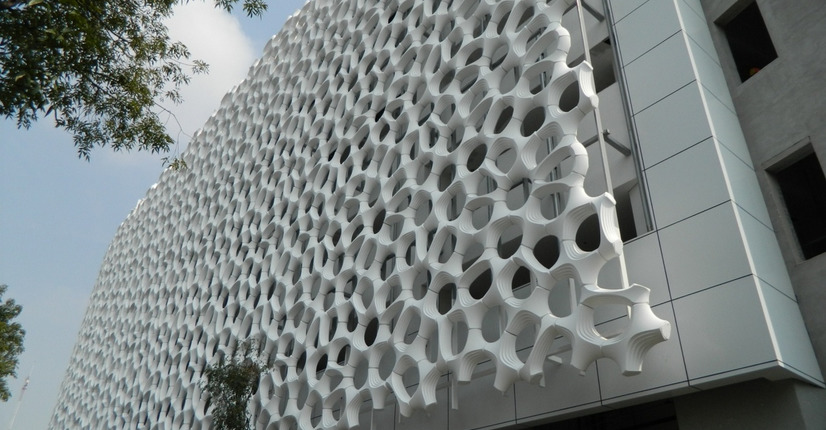
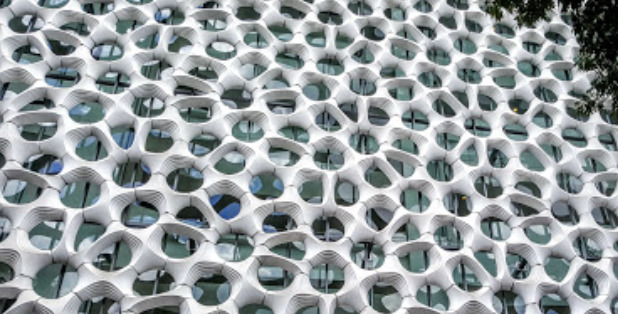
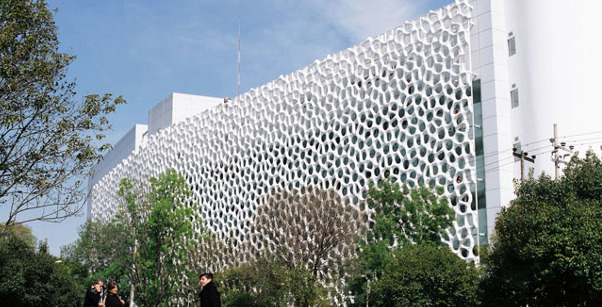
There are also some smaller initiatives as standalone solutions: the Dan Rosengaarde Smog Free Tower, a smog sucking vacuum tower already installed in Beijing; and CityTree, the ultra tech green wall that can be displayed as urban furniture to help control air pollution.
Architecture has a lot to offer to control air quality, and ideas are sprouting in many directions.
They key to their use on a larger scale is to show their effectiveness by monitoring how air quality is improved following these various initiatives.
MONITOR, ACT AND TAKE CONTROL OF THE AIR QUALITY THAT MATTERS TO YOU!
Better Air Quality is the Smart City Challenge
Cities across the globe are facing increasing levels of air pollution. Particles so small that we cannot see and gases at ground level, penetrate our bodies affecting us in many ways: cardiovascular diseases, chronic respiratory illnesses, strokes, heart attacks, asthma and many more are all common effects of air pollution.
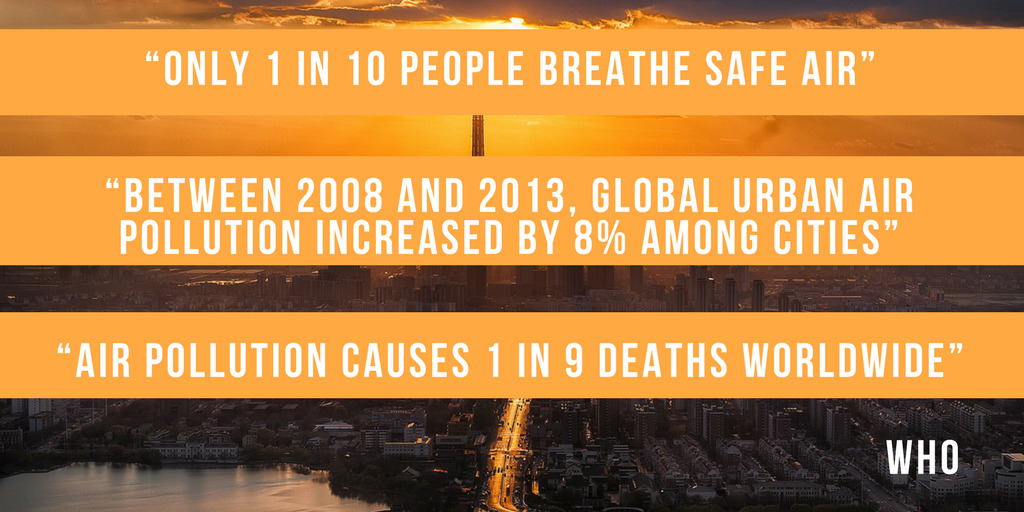
What can cities do?
WHO’s initiative ‘Breathe Life 2030’ calls for cities to take action in the following areas to reduce air pollution:
- TRANSPORT: does your city have a solid transport system? Are car emissions controlled? Think about…
- Walking and Cycling paths
- Efficient mass transport
- Controlled emission standards
- Soot-free vehicles
Cities that transform into pedestrian & cycle-friendly and with efficient mass transit systems and controlled emissions generate less pollution and are more liveable.
- ENERGY SUPPLY: Cities are big energy consumers, striving for cleaner energy production is key. Think about…
- Renewable power supply
- Diesel replacement
Cleaner energy production will impact positively the air quality in that given city.
- WASTE: proper landfill management can decrease the emission of gases.
- INDUSTRY: industries in and around cities should be strictly controlled for their emissions.
- AGRICULTURE: agricultural areas around cities should be careful with irrigation, reduce open burning and manure management to control emission of gases and particulate matter affecting nearby cities.
- HOUSEHOLD: households should be helped to make sure they use low-emission stoves and fuels, improved lighting and passive building design.
However, the first step is always to understand local air pollution, how does it build up in a city, when and how does it clear up. Each city has different patterns of producing air pollution and different natural ways of dispersing it. Understanding how this interaction happens is essential for any city to take steps to improve air quality.
Monitor, monitor, monitor!
Nowadays cities have a handful of high-end air quality monitoring stations that provide a broad view of air quality in any given city. This information may also be compared or complemented with satellite images. But both options provide general information. In real time, most cities cannot precisely say the pollution levels at block level or intersection level. This is a limitation to understanding local air pollution and to taking precise local measures to improve air quality or to measuring the effectiveness of any given measure.
Be a smart city, track outdoor air quality with meo air analytics: have multiple data points, understand local air pollution and find data oriented solutions!
Air’volution: cities improving air quality!
We know for sure that city dwellers are highly affected by worsening air quality across the world and the majority of deaths caused by air pollution occur in cities. In the past ten years, cities have been working together as part of the group C40Cities to find solutions to protect their citizens. The Mayors of the cities that are part of this group have come up with some innovative proposals to push an Air’Volution that stems pollution in the cities. The end of March saw the announcement of bold plans to address locally created air pollution.
The C40Cities, launched in 2005, is a group created and led by cities that connects 90+ cities across 50+countries, representing 650+ million people and one quarter of the global economy. The group recognizes that cities generate most of the world’s carbon emissions and house almost 60% of the global population, hence the importance of their stance in transforming the systems that create the most carbon emissions: transport, building and waste.
What is the Air’volution?
It’s the collection of actions taken by cities to address air pollution and control vehicle emissions. Remember what started as a VW (Volkswagen) scandal? There is now a list of car manufacturers that have been found to manipulate the tests of car emissions. Not to mention that we now know the real polluting nature of diesel cars, even the EURO 6 diesel engines releases more fine particulate matter than heavy duty trucks. Such as:
- Emissions on the road have been proven to be 15 times greater than emissions in laboratory conditions. Paris and London are working on creating a scheme to score new cars based on their real-world emissions and air quality impact, rather than a laboratory measure. All data is expected to be released by end 2017 so that consumers will be able to know the score for each car model. Seoul, Madrid, Mexico City, Milan, Moscow, Oslo and Tokyo and other cities have committed to work in the development of a global scoring system.
“For too long, some vehicle manufacturers have been able to hide behind inconsistent regulation and consumer uncertainty about the damage their cars are causing,” said Mayor of Paris and C40 Chair, Anne Hidalgo. “This announcement is a wake-up call to car companies that they need to act now. Citizens of Paris and cities around the world demand clean air to breathe and this new scoring scheme will be key to helping achieve that. I am pleased that Paris, the city of the Climate Agreement, is working with London and Seoul to support this project.”
“This scheme is also a fantastic example of how big cities around the world can pool their expertise and their influence to encourage big industry to clean up its act. The toxicity of the air in London and many other big cities is an outrage, and schemes of the type we are introducing in London and Paris have the potential to make a massive difference to the quality of the air we all breathe.”
Other measures include:
Cities implementing low-emission zones: London has proposed to introduce an Ultra Low Emission Zone (ULEZ) in central London, where cars will have to meet the minimum emission requirements or pay a daily fine (£10). In Paris, vehicles are restricted access for the most polluting vehicles, through the use of Crit’Air stickers. And Seoul has recently designated a Green Transport Promotion Zone that restricts old diesel vehicles and construction equipment, the objective is to cut carbon emissions from vehicles by 40% and vehicle demand by 30%.
A number of Asian cities are part of the C40Cities: Auckland, Bangaluru, Bangkok, Beijing, Chengdu, Chennai, Delhi, Dalian, Dhaka, Guangzhou, Hanoi, Ho Chi Minh, Hong Kong, Jaipur, Jakarta, Kolkata, Mumbi, Nanjing, Singapore, Shenzen, Shanghai, Seoul, Sydney, Yokohama, Chennai, Mumbai, Tokyo and Wuhan. Most of these cities need to learn from experiences from other cities in reducing vehicles emissions.
We need to better understand air pollution patterns in our cities to make the most of these policies. Deployment of air quality monitors across the cities is the first step!
Sources:
C40 CITIES – Air’volution
C40 CITIES – Press Release: Mayors of Paris and London Announce Car Scoring System to Slash Air Pollution on City Streets
The International Council on Clean Transportation – First look: Results of the German transport ministry’s post-VW vehicle testing


